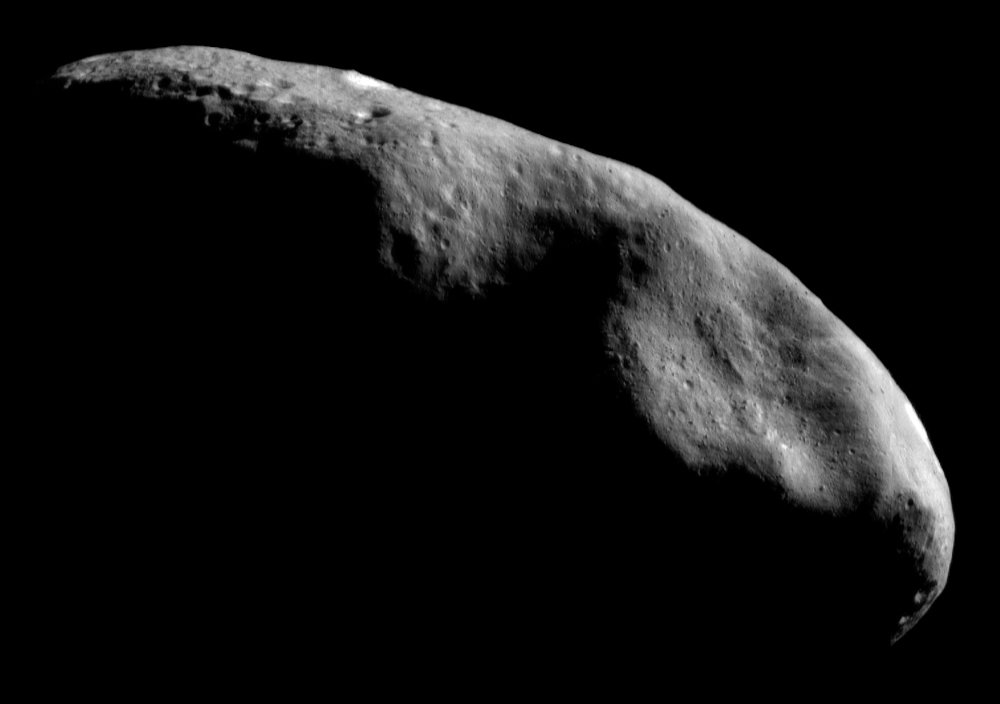Solar system has its own rock collection: Asteroids
It is surprisingly busy out in space. There may not be any air, but there is an incredibly large amount of small natural objects.
For science-fiction aficionados, asteroids were described as small rocky bodies whizzing around between Mars and Jupiter that could either be mined for their metals, act as hideouts for interstellar pirates, or become way stations for manned missions to further outlying parts of the solar system.
Aster means “star-like” from the ancient Greek, and the term “asteroid” was introduced in 1802 by Sir William Herschel, the German-British astronomer, and who discovered Uranus in 1781. (It was the first planet discovered by the use of a telescope).
Ceres was discovered in 1801, and although it has since been designated a dwarf planet, it was the first small space object located between Mars and Jupiter. When the second object, 2Pallas, was discovered in 1802, Herschel felt these objects were different enough from the known planetary bodies and therefore sought a new naming category.
In 2015, the United Nations designated June 30 as International Asteroid Day. It commemorates the Tunguska explosion on June 30, 1908 of a small asteroid — some say a comet — over Tunguska, Siberia. Photos from that event show 800 square miles of flattened forest trees, the size of Greater London. It is estimated that 80 million trees were destroyed and hundreds of reindeer were incinerated.
In February 2013, another asteroid, approximately 66 feet long, exploded over the Russian city of Chelyabinsk, injuring about 1,000 people — mostly from flying glass. Shockwaves were felt as far away as Antarctica. Despite its destructive power, it is not clear if an impact crater exists. Generally, the earth’s atmosphere is protective against smaller space bodies, breaking them up before they strike the ground. However, the process creates intense heat, which in turn creates the destructive shockwaves.
The Earth shows numerous impact craters. Meteor Crater near Flagstaff, Arizona — designated a National Natural Landmark in 1967 — was created about 50,000 years ago. In Yucatán, Mexico, there is the famous Chicxulub crater — about 112 miles in diameter — created 65 million years ago. It is believed to have been caused by a massive asteroid, and was the direct cause of the K-T (Cretaceous-Tertiary) extinction in which 70 percent of all terrestrial species disappeared, including the dinosaurs. The devastation would have been the result of shockwaves, fires, earthquakes and hurricane-level winds. Nitric acid rain would have been ruinous for plants, and sulfuric aerosols would have lowered temperatures worldwide.
Scientists suggest that Earth’s surface would resemble the pitted surface of the moon except for three factors. Our Earth has an atmosphere that changes the conditions of impact. The other factors are geologic processes — plate tectonics, erosion and sedimentation.
Erosion wears down the tops of crater walls while sedimentation, caused by water flow, gradually fills in the bottom of the crater. Plate tectonics gradually recycle the Earth’s surface, removing traces of older formations. Additionally, craters can be disguised as lakes and are found worldwide, from Canada to Tajikistan. Dates range from between 700 million and 1 million years ago.
Not surprisingly then, asteroids have been the objects of serious interest to NASA. In 1989, the Galileo mission to study Jupiter and Jupiter’s moons flew by the asteroids Gaspra and Ida, taking photos and scientific measurements. On that mission, asteroid Ida was found to have its own moon, marking a first for an asteroid having its own orbiting satellite, named Dactyl.
In 1996 NASA launched NEAR (Near Earth Asteroid Rendezvous) Shoemaker, whose five-year mission consisted solely of circling and retrieving data from the asteroid 433 Eros. Since then, there have been 10 missions that focused either solely or incidentally on asteroids. Some of these missions were funded entirely by other countries — such as Rosetta, launched in 2004, which was entirely a European Space Agency project — or as a joint project, such as Hayabusa, launched in 2003, between NASA and the Institute of Space and Aeronautical Science of Japan.
I still remember the excitement in 2014 when the Philae lander from the Rosetta mission reached the surface of the comet Churyumov-Gerasimenko. And not long ago, the OSIRIS-REx arrived at asteroid Bennu (538 yards in diameter) after a more than two-year trip.
Its mission includes preliminary gravity measurements and a thorough mapping of the surface in preparation for a future tight flyby in 2020, during which a sampling arm will remove surface material during a five-second “grab.” This material arrives on Earth in 2023 for analysis.
Osiris is a meaningful name for this mission as he was the ancient Egyptian god of the underworld and rebirth. The acronym in this case stands for Origins, Spectral Interpretations, Resource Identification, Security Regolith Explorer.
More next time!
Have a thought or comment for Sura Jeselsohn? Email her at greenscenesura@gmail.com.
CORRECTION: Flagstaff is located in Arizona. Green Scene’s Jan. 3 edition named an incorrect state.






